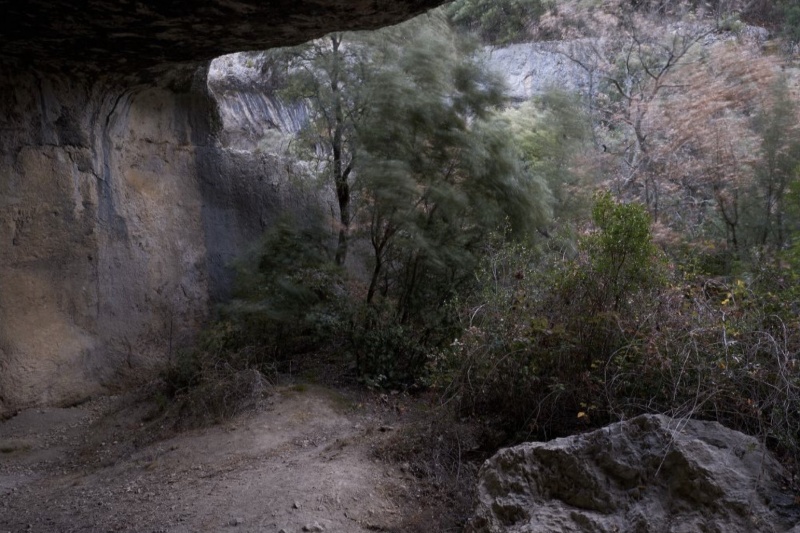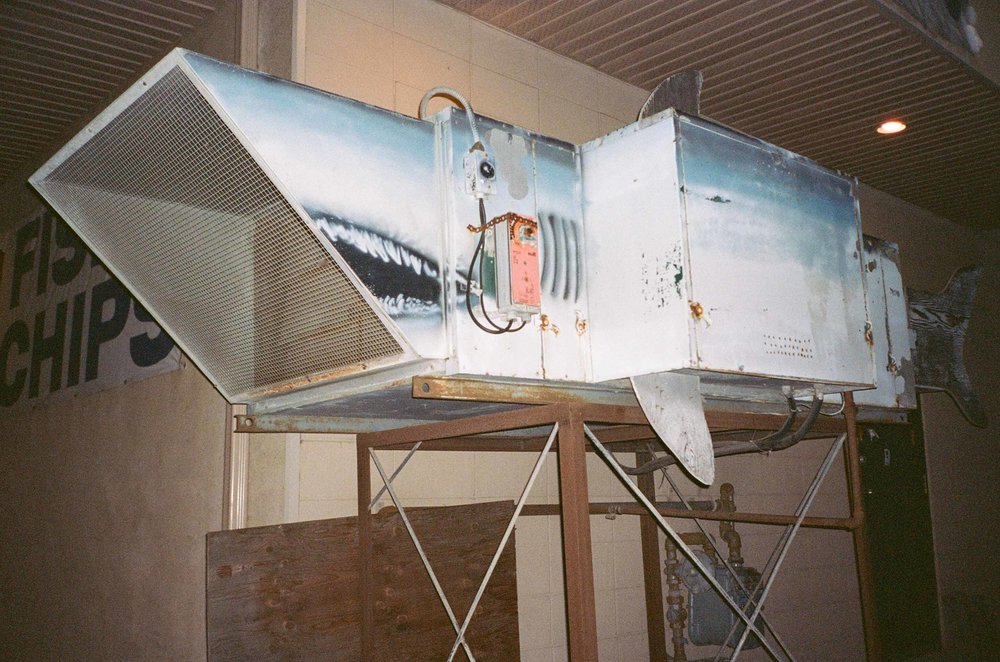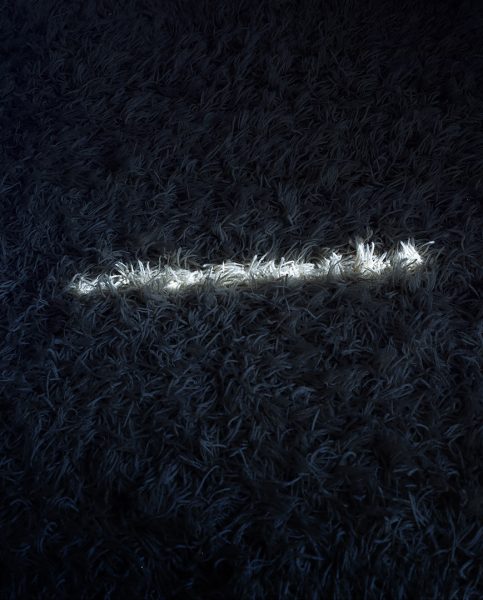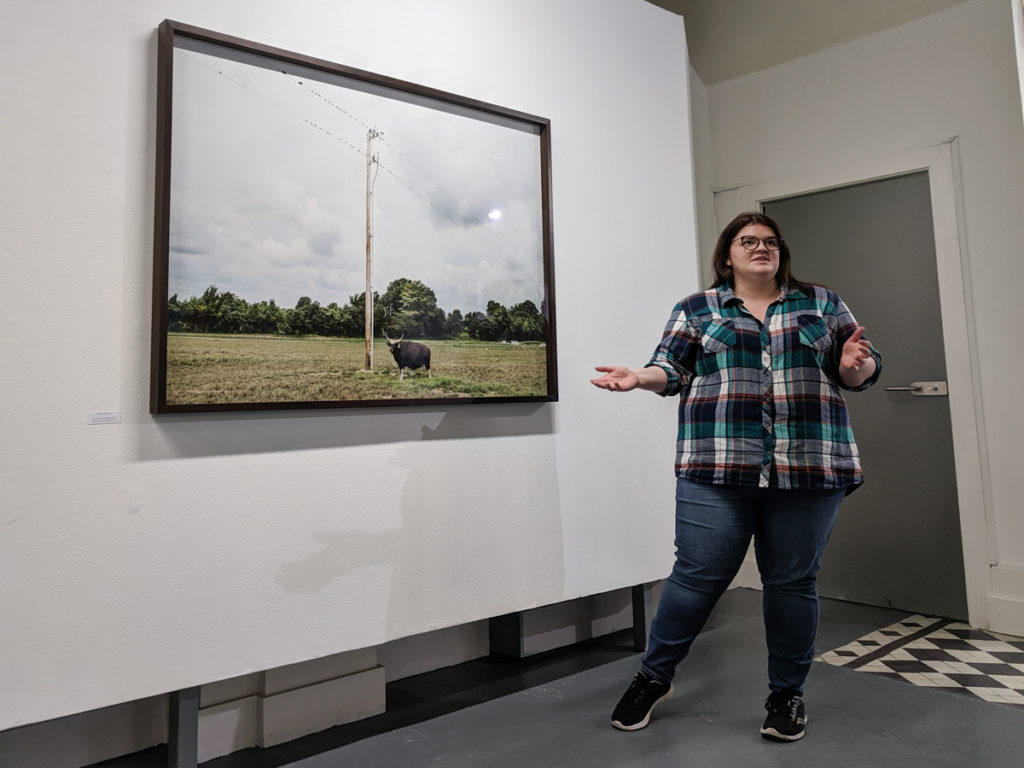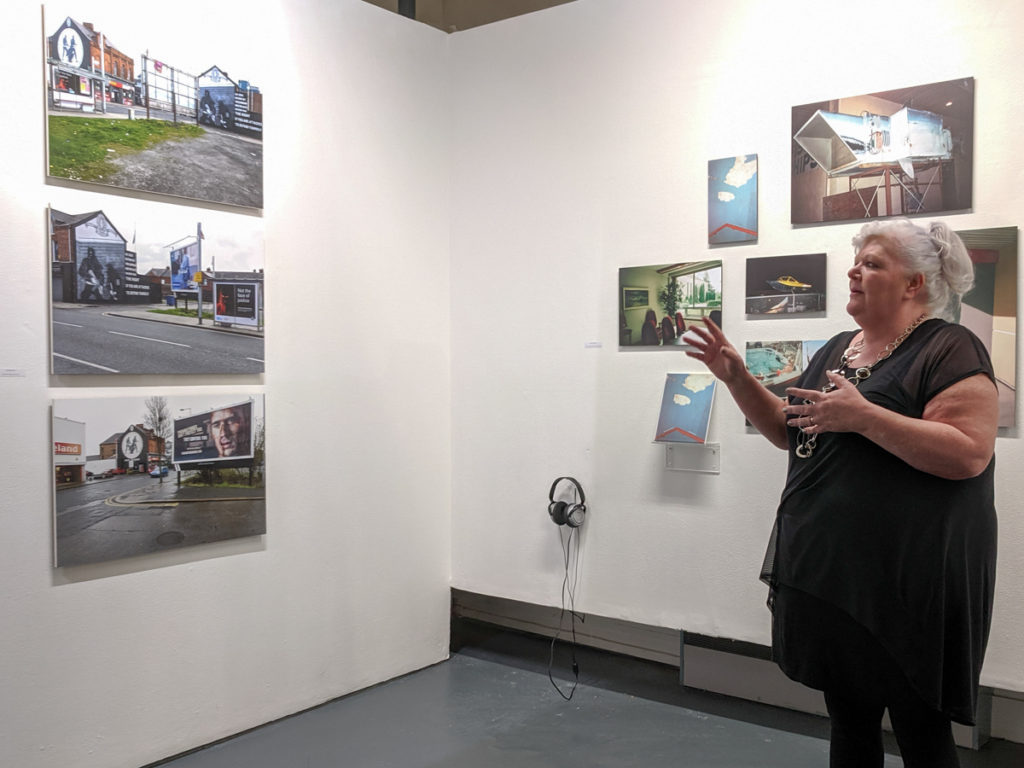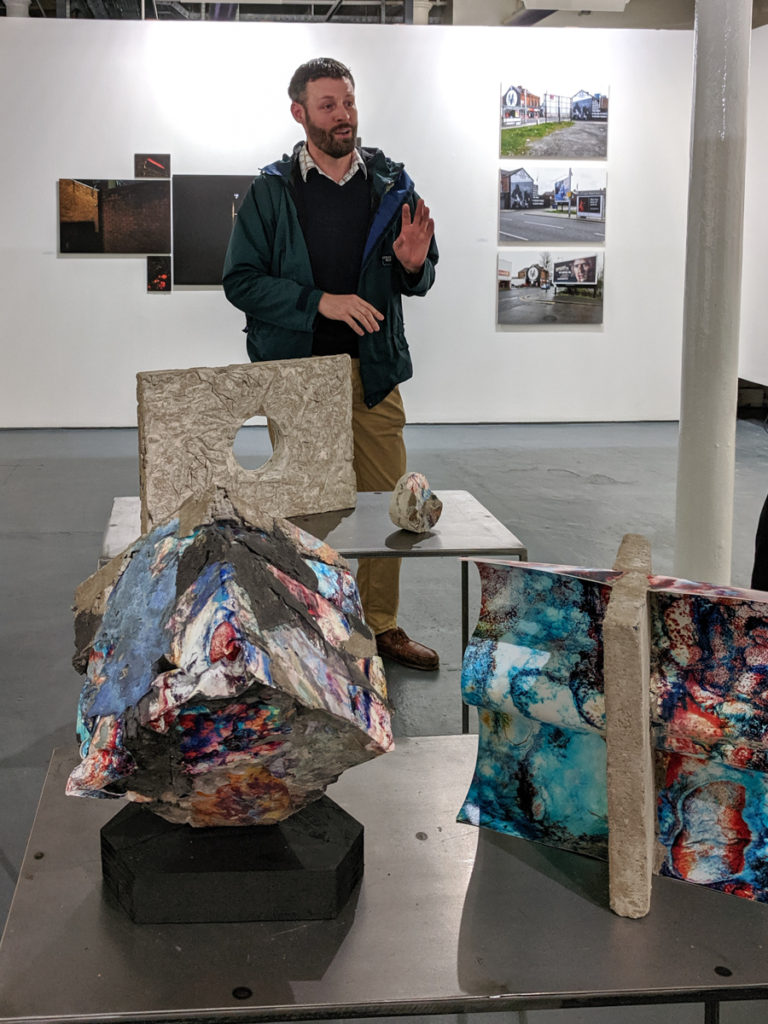Belfast Exposed is hosting a group exhibition displaying the work of graduate students of the MFA Photography programme at Ulster University (UU). The theme is ‘Post Truth’, which aims to explore how we find our truths in a reportedly ‘post truth’ society, through the medium of photography. As UU Professor Donovan Wylie explained on the information flyer, the works collectively represent collisions of faith, identity, and history, which “take us to a place of post truth, a world where there is a new normal: undefined, abstract, and make believe.”
The exhibition was curated by Deirdre Robb (Chief Executive, Belfast Exposed), with consultant Mirjami Schuppert, and it is part of the 2019 Belfast Photo Festival. This evening featured a guided tour by Abbey Bratcher and other contributing artists.
There are 19 pieces of work on display. All are thoughtful and excellent productions. This review focuses on the works that more readily resonate with familiar characteristics of “post truth”, such as motivated reasoning, selective memory, and the power of belief.
Anson Yip explores a theme of change in Hong Kong society, through a series of landscape photographs that depict reservoirs built by the British before they left the colony. At one level, there may be a debate about how much society is changing in Hong Kong, post-departure. But the projection of the reservoirs as a metaphor of tension (‘Littoral Tension‘) could be interpreted as a form of motivated reasoning, whereby these items of legacy have a value greater than the mass of water that they contain. Metaphors can motivate.
In ‘Phantom Parks‘, Abbey Bratcher makes an astute observation of confirmation bias obvious in nature parks — we’re excited about seeing the exotic wildlife whilst ignoring the reality that it is a constructed scene; the imported water buffalo amongst the man-made telephone pole and native birds. But to be cognisant of this fact would spoil our experience. We filter for our own pleasure.
This is related to our selective choice of memories. With the device of a family photo album, Elisa Valandro’s ’36 Years of Life Together’ is an ongoing process of exploring how we create and supplement memory with the aid of familial images. As she asks in her artist statement: “How many memories do we take from others and put in our story? Are we able to distinguish between what really happened and what has been created in our minds to cope with our present?” This phenomenon is recognised by scientists, who can explain our tendency for a “rose-tinted” past as a form of self-preservation.
Jacob Alexander Lange didn’t have a neatly compiled family photo album for a personal reference point. Instead, while clearing his deceased father’s home in rural Florida, he came across a small album of 4×6 photos, but weathered beyond recognition. In ‘Memory is Fragment, Memory is Loss’, Lange reinvigorates and reassembles these abstract images into tactile objects of concrete and mixed media, both as a form of memorial and as epitaphs of hope: “I wanted to make something physical and tangible where none exists, to ignite the imagination. You try to make a real memory of your own.”
Nigel Swann relies on history alone to reconstruct scenes to provoke our imagination. As described in the artist statement, Irish writer Samuel Beckett was wanted by the Nazis for his involvement with the French resistance. Beckett fled and remained in the Vaucluse mountains. ‘The Nono Zone’ was created in these refuge landscapes. We are to believe these images as context for Beckett’s future work. At least there’s corroboration with acknowledged archival material.
Then there’s the belief of fantasy. Mark Templeton’s ‘Ocean Front Property‘ represents a desired experience juxtaposed with a banal reality. The work is a collection of aspirational imagery of wanting to be somewhere else; in this case near the ocean, which is over 1,000 km away in the landlocked province of Alberta, Canada, where they were photographed. Such objects reflect a form of curated truth, both real objects in real places, as well as projections of where we believe ourselves to be.
The next and arguably highest level of truth is transcendental belief, where physical objects may assist but are not necessary for adherence. And likewise, tangible facts of reality can become inferior or irrelevant. In ‘We Became Everything’, George Voronov gave himself the challenge of attempting to capture the “metaphysical decisive moment.” if you will, of a link between the material and spiritual worlds, where “the banal gives way to the sublime.” It is very difficult to photograph what a religious experience feels like.
Indeed, good visual storytelling, which is a key attribute of photography, is always challenging. The stories don’t write themselves; they require curiosity, investigation, interaction, reflection, and considered presentation. A gallery is the appropriate place to display completed works, and the collection on show is an excellent representation of this year’s MFA photography students at Ulster University.
Post Truth exhibition is available for public viewing at Belfast Exposed from 29 May – 7 June 2019.
More photos
Originally published at Mr Ulster.



